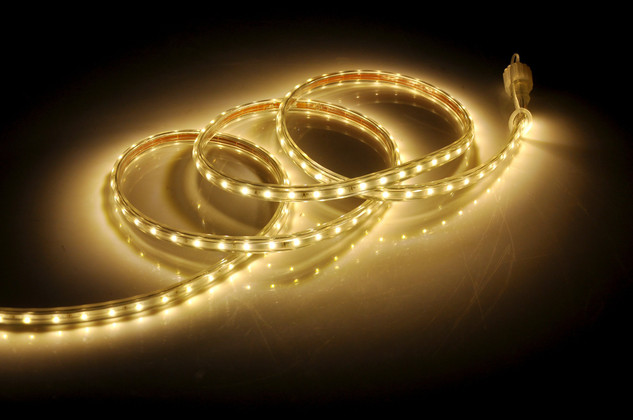
7 Signs You Need to Replace Your LED Strip Lights
09/15/20
Not only does LED lighting — in any form — save you money, but its easy customization makes it ideal for any space in your home.
LED strip lights are perfect for under-the-counter kitchen lighting, and can even add an interesting ambiance behind your TV.
The options are endless, but how do you know when to replace them? Read on for seven signs that will tell you when to replace your LED strip lights.
Installing LED Strip Lights
As with anything, you should read the instructions before you install your LED strip lights. They might be easy to install, but things can go wrong quickly if you don't learn about what you're doing.
Be sure you have the proper equipment needed for the job before doing anything. If you're getting creative with your strip lights, make sure you do it right the first time to avoid any mistakes.
That being said, sometimes mistakes are unavoidable. Everybody makes them, and it isn't always your fault. It's best to keep an eye out for these signs to avoid potential danger.
1. Flickering
There are many reasons your LED could be flickering. A loose connection, loose bulbs, an incompatible dimmer, bad fuses, or even faulty wiring.
These can all lead to flickering, which may eventually lead to the light itself going out completely.
2. Improper Lighting
If you're not satisfied with the light that's coming from your LED light strips, it might be time to replace them.
Light strips not only come in different colors but also different temperatures. Paying attention to the colors of your floor, ceiling, and even furniture can help you decide which light is best for your space.
Some lights can appear too cool and blue, while others can be too warm and sometimes not provide enough light.
A preventative tip is to research the types of LED strip lights before buying any, and then deciding what your best option would be from there. However, there are solutions if you're seeking different wattage and power.
3. Won't Light Up At All
This is often the aftermath of flickering and can have similar causes. Faulty wiring, bad pin connections, even bad fuses.
If your LED strip lights have stopped working, be sure to check the entire strip before you replace it. This will help you avoid installation mistakes with the new strip if there were any beforehand.
4. Improper Installation
Installing LED strip lights is an easy process on its own. The tricky part comes when you're cutting and connecting strips.
Though the installation shouldn't be too time-consuming, you want to take the time to make sure you're doing it properly. Layout all your materials beforehand, and triple-check that you have everything necessary.
One of the most common mistakes people make before installation even begins is accounting for length. LED strip lights have a maximum run, and must be properly wired to ensure they stay lit.
This can be done by wiring additional strips needed back to the original power supply or using an amplifier. With an amplifier, you're connecting the two strips using it. Not the original power source.
If they don't and things go awry, you might have to
5. Frayed or Overlapping Wires
A common wiring mistake, frayed or overlapping wires are bound to lead to an electrical shortage or overall malfunction.
Connecting multiple strips for added length to your LED strip lights might be necessary, but be sure that your wires are clean and straight when splicing or connecting multiple light strips.
Solderless connectors are available to help you cover loose wiring and avoid this problem. LED strip lights also come with marked places to cut the strip, but it could be irreversible if you make a messy cut.
6. Falling Off the Wall
This isn't so much about replacing the strip as it is about replacing the adhesive. You can buy new adhesive backing for your LED strip lights, but if they continue to fall off the wall, it might be time to purchase new strip lights altogether.
If the surface you're adhering to the strip to isn't smooth, you can purchase adhesion promoters or separate mounting strips.
7. Make Sure It's the Strip
Before you buy a new light strip, be sure it isn't the strip controller.
Your LED strip lights shouldn't be giving off heat. Some are normal, but they should never burn as an incandescent lightbulb would.
Often, if the bulb is getting too hot, it's because the LED strip controller gives off too much power. If this is happening, replacing the power source before the strip lights go out is the smartest move. Be sure that the voltage on the strip lights matches the voltage on the power controller.
If the lights aren't dimming properly, or are giving off too much or not enough light, the strip lights could not be connected to the proper dimmer.
Again, this should be replaced before the actual strip lights go out as a result.
Quality Over Quantity
Whether you have a large space you'd like to light with LED strip lights, or you're multiple small projects you'd like to tackle over time, the quality matters more than the quantity.
LED strip lights are meant to last a long time, but spending the bare minimum on to quickly achieve your desired effect can result in the strip lights not working at all. Purchasing quality LED supplies the first time around can save you money in the long run, because you won't have to worry about replacing what you originally bought.
If you're interested in your strip lights, or just want to read more on LED lighting solutions, contact us today at (406) 586-5970, or check out the rest of our blog.


